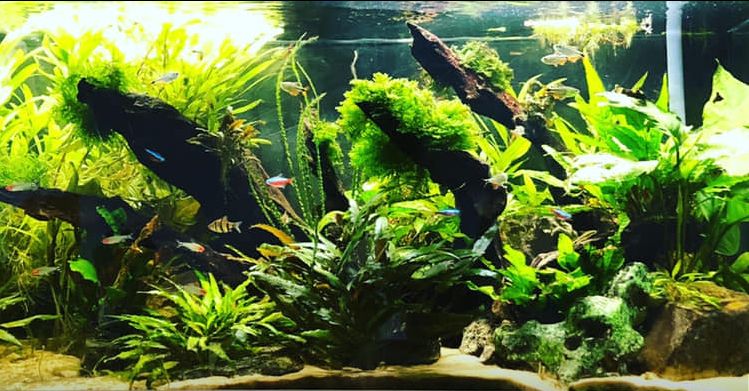
Most municipal water supplies in the developed world use chlorine to make the water safe to drink. The author spent several weeks close to death after brushing his teeth with poorly chlorinated water from a municipality in the “undeveloped” world, so he will tell you chlorination is a very good and necessary thing.
Chlorine Removers or “Conditioners”
My recommendation with conditioners is simple:
.
Buy ONLY Conditioners that say “Sodium Thiosulfate” on the Bottle in the Ingredients List. Then use 5X the Recommended Dosage.
.
If the tap water has chlorine or chloramine the water can typically be treated with a conditioner in the water change bucket. Then it can be added to the aquarium. Alternatively, the conditioner can be added to the tank before the change water is added. Dosage should be based on the amount of change water. The amount should NOT be calculated based on the tank size.
When a water system is on chloramine. the chlorine pulses need to be frequent. Depending on the water quality it might be as often as weekly. This is why some suppliers of conditioners recommend five times the level of conditioner for chloramines that is used for chlorine.
Note that for discussion purposes chlorine and chloramine are identical. All conditioners which neutralize chlorine also neutralize chloramine with equal efficiency. There is just some subtleties about treating chloramines (having to do with the ammonia in the chloramine) which require a separate discussion.
This article goes into chlorination in some depth. It is only for the real nerds in the hobby, people like the author.
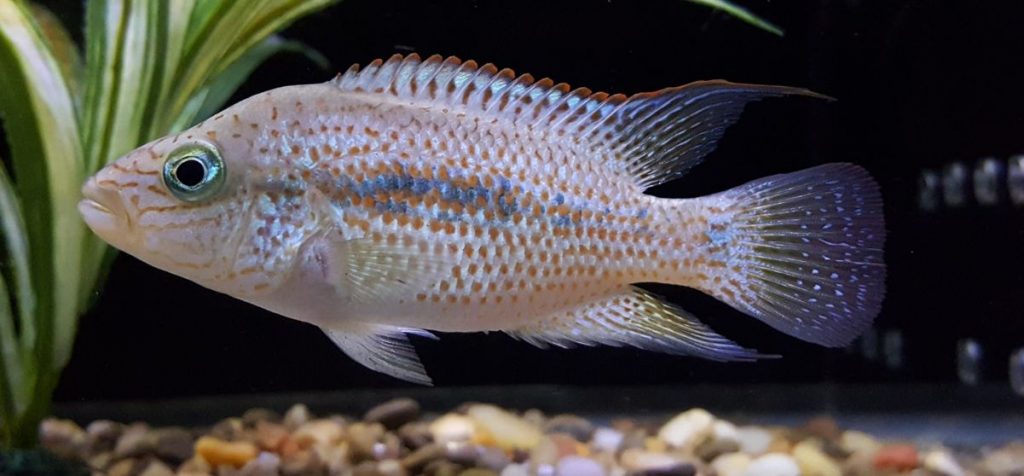
Level of Chlorine to Expect
Chlorination is not a simple “add chlorine” and walk away proposition. Water treatment plants typically aim for a MINIMUM of 0.5 parts per million (ppm) of chlorine. Chlorine gas kills bacteria by oxidation. The problem with chlorine is that it doesn’t stop there. Chlorine continues to oxidize the nitrogenous organic matter in the dead bacteria (and dead algae) over time.
As a result, a water treatment facility may have to add 3 parts per million chlorine to achieve a chlorine level of 0.5 parts per million in lines miles away from the treatment plant. So, depending on your location, you can have widely varying levels of chlorine in your water.
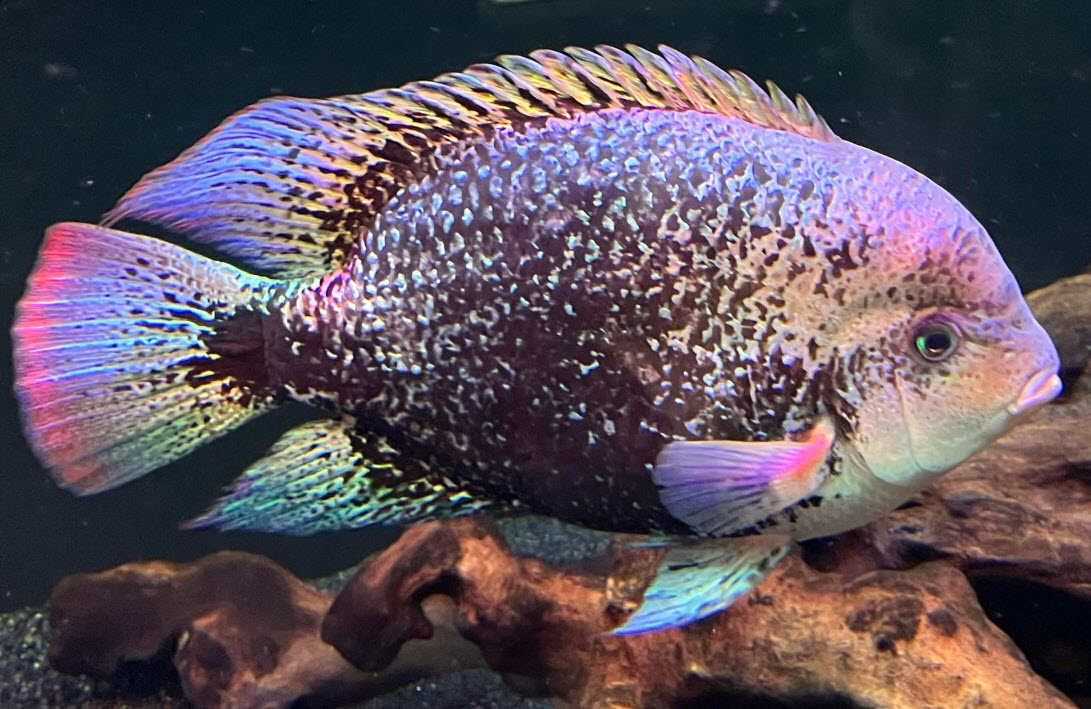
Chlorine Pulse Events
When one does a water change with chlorinated water and conditioner, there is a serious problem which can kill all the fish in an aquarium very quickly, anywhere from seconds to days. “Normal” chlorination levels are 0.5 to 2 parts per million (ppm) of chlorine. Most chlorine “neutralizers” and treatments neutralize between 1.0 to 2 ppm of chlorine.
Here is a pertinent comment made on this website:
“A little something I hope will help fellow hobbyist
I have noticed the smell of my water from the tap has been bad (like chlorine). The first time I did a water change after I noticed this. I had to dose my dechlorinate again to get to zero. I use a pool test kit to check my water before I pump it into the tank. I fill a 30 gallon trash can and dechlorinate it for my water change.
I got this email today:
Dear Cal Water customer:
Some Cal Water customers may temporarily experience a different taste and odor to their water, due to rising temperatures and algae in the Kern River, from which we obtain water. We treat the water to make it safe to use and drink. While unpleasant, please be assured that the taste and odor are aesthetic issues only; we rigorously monitor water quality, and your water continues to meet all federal and state standards set to protect public health.
In the meantime, you can refrigerate an open pitcher of water, which will help the odor dissipate faster. If it does not clear or you have any concerns, please Contact Us.”
Water suppliers typically will treat with up to 4 ppm of free chlorine periodically. This is what is often called a “chlorine pulse” or a “chlorine bullet”. The 4 ppm of free chlorine or chloramine are the maximum allowed under EPA rules.
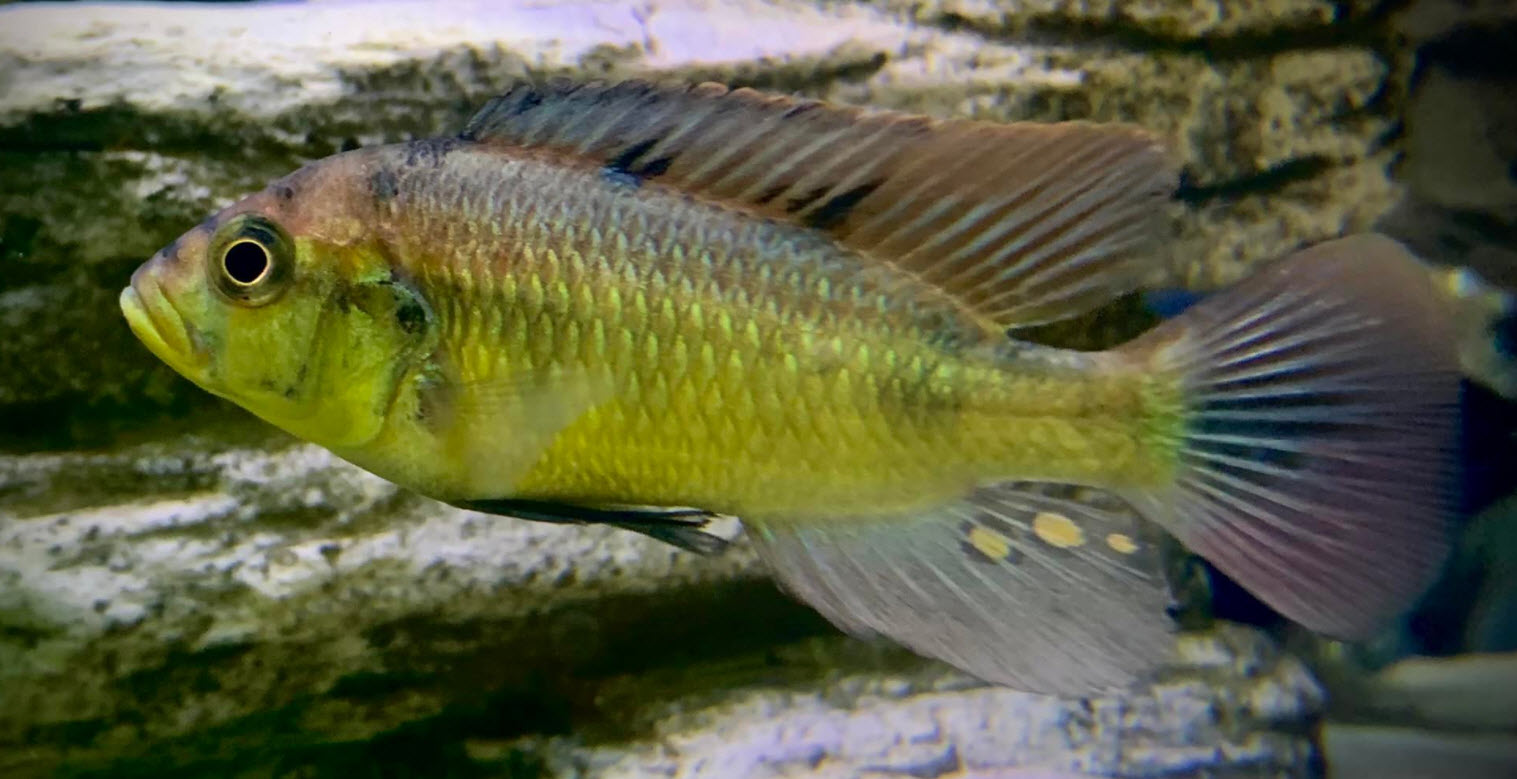
The majority of the water supplies in the USA are currently treated with chloramine, which is chlorine combined with ammonia. The nitrogen in the ammonia feeds harmless types of bacteria which create a “biofilm” on the surfaces of the water pipes. When this biofilm gets to a certain thickness it will allow “bad” pathogenic bacteria to reproduce under the biofilm.
So the lines are treated with 3 to 4 ppm of chlorine to remove the biofilms. With new regulations this can be done as often as once a week. Sometimes this is accompanied by what is called “line flushing”, where fire hydrants are opened up. The same level of chlorine can be used when the water has bad tastes due to algae in the water supply.
Note a similar problem can occur when one has well water. Well water typically does not have chlorine in it but it can be very low on oxygen and/or very high in carbon dioxide. These two will do massive fish kills just like chlorine pulses.
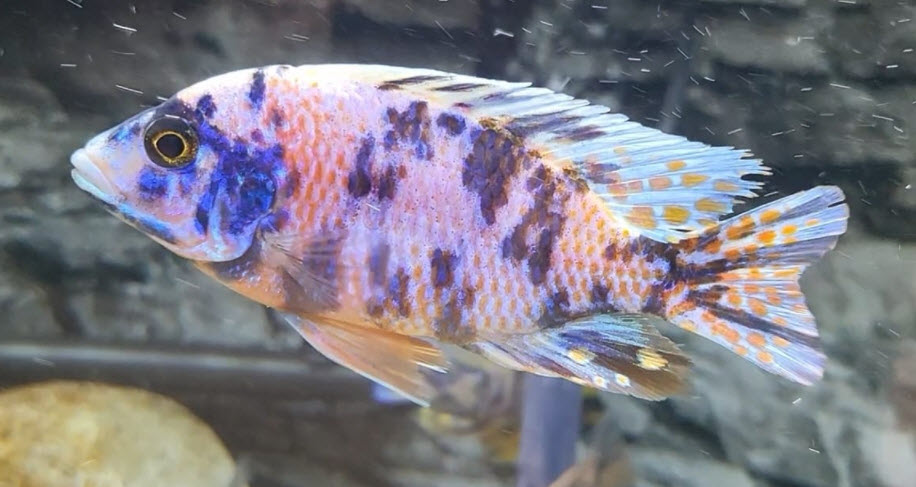
Because deaths from “chlorine pulses”, low oxygen and carbon dioxide are very commonly misdiagnosed, it is the source of many fish keeping myths. Some of those myths are:
- Large scale water changes (40% to 95%) kill lots of fish.
- Ammonia or nitrite spikes rapidly kill lots of fish
- Whole tanks of fish can be electrocuted
- Changing water with water even a few degrees difference from the aquarium water will “shock” the fish and kill them.
- Changing water with water of a different pH, GH or KH will “shock” fish and kill them.
.
These are ALL only myths and are simply not true
.
We go into each of these myths in more detail below.
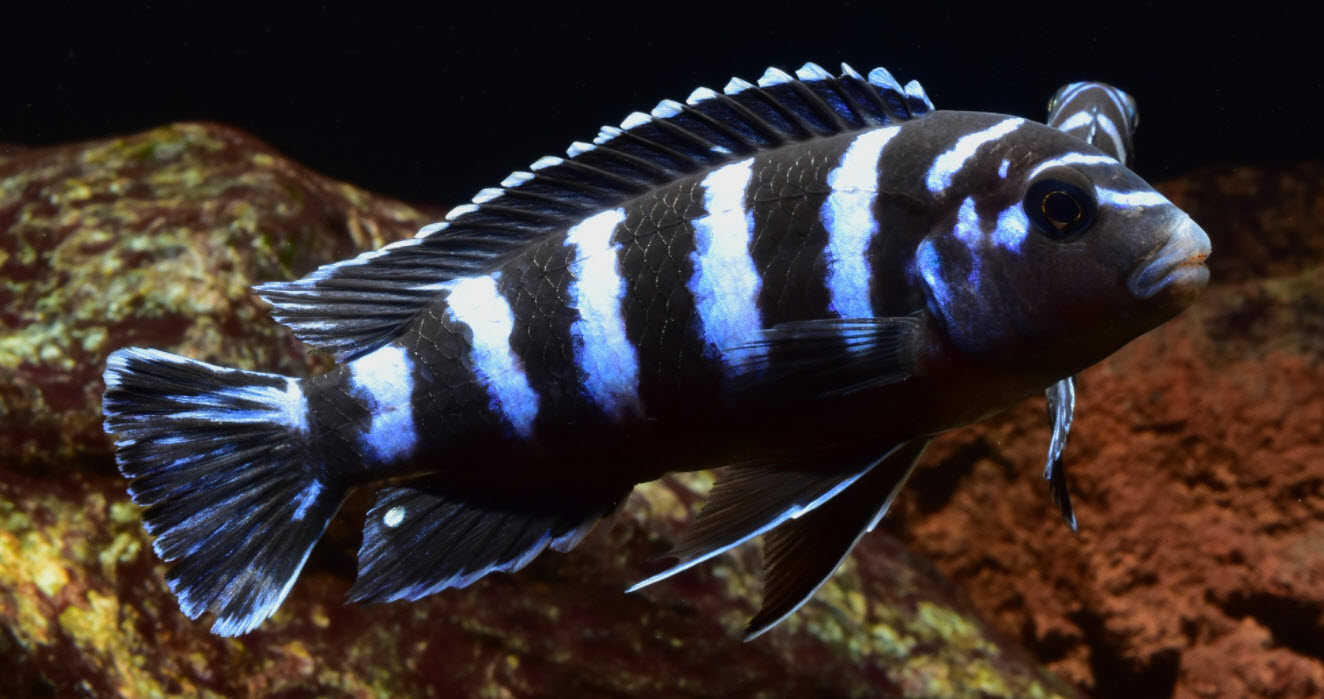
There are several things which can kill lots of fish overnight. A heater stuck on, a power outage which stops the aeration in a heavily stocked aquarium, or even a bacterial infection can do it. But if there was a water change just prior to the deaths, a chlorine pulse, low oxygen or high carbon dioxide will be the killer 99% of the time.
If one has fish in stress because of a chlorine pulse understand the excess chlorine is neutralized in the filter of most tanks in minutes to a few hours. So it is of little use to try and save the fish by adding more conditioner hours after the water change.
The best treatment for fish damaged by chlorine is to take the temperature down to 70 degrees and aerate the hell out of the water with a big air pump and airstones. This takes the oxygen level of the water up and gives the damaged gills the best chance of doing their jobs.
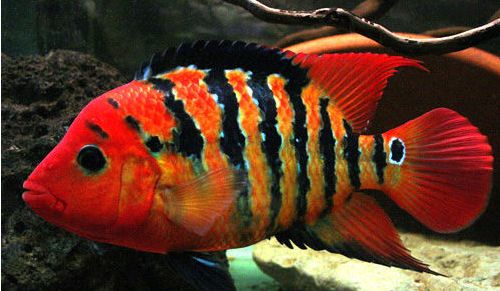
Reasons for Chlorine Pulses
There are several reasons for adding more chlorine than usual:
- Municipalities which use chloramines must do “chlorine pulses” on a regular basis as the ammonia in the chloramine feeds beneficial bacteria (hardy little buggers!). This mean beneficial bacteria build up in pipes in what is called a “biofilm”. This biofilm can harbor and shed pathogenic bacteria. This biofilm must be killed and cleaned out at intervals.
- In the summer months warm water will cause blooms of algae, which cause the water to smell “musty”. To treat this smell, many municipalities add more chlorine
- If an area has had flooding or heavy rains, municipal water sources often have to add more chlorine.
- When a water line breaks and the municipalities repair it they need to remove any bacteria that may have gotten into the lines. So they will put in a chlorine pulse.
These chlorine pulse events are common killers of fish, especially in the summer months. It is sometimes very difficult to closely control the amount of chlorine added in these events. While the EPA limit is 4 ppm the author measured 11 ppm chlorine in Tempe Arizona once.
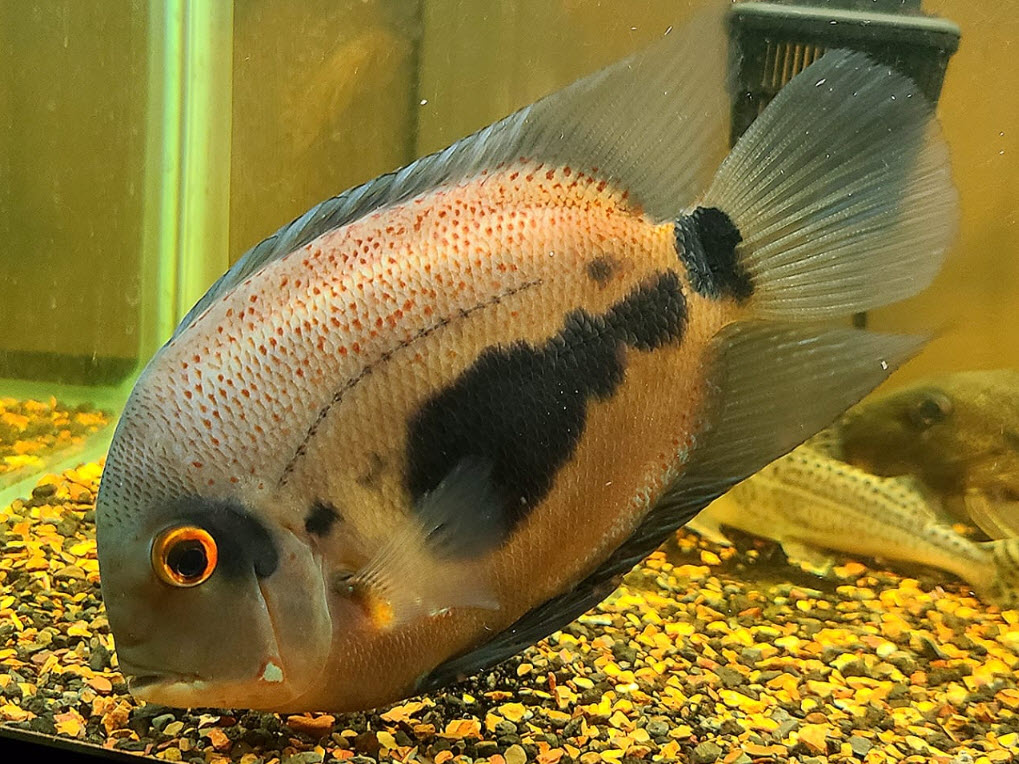
Many hobbyists on social media report fish dying after a water change even though they used conditioner. Invariably this turns out to be chlorine poisoning. Mike Mass lost 180 angels and cardinals overnight (ouch). Adam C. lost several aquariums. Amy Gage lost a whole tank of fish. Mike Randall lost 70 Africans in 3 days. Colby Ladd lost 32 Lake Malawi’s. The author lost about fifty mbuna to a chlorine pulse.
Unfortunately these mass deaths are often blamed on a host of other reasons: ammonia poisoning (only very slowly kills), pH shock (a myth), temperature shock (another myth), electrical shock (still another myth), heavy metals in the water (laughable!), etc. ad infinitum.
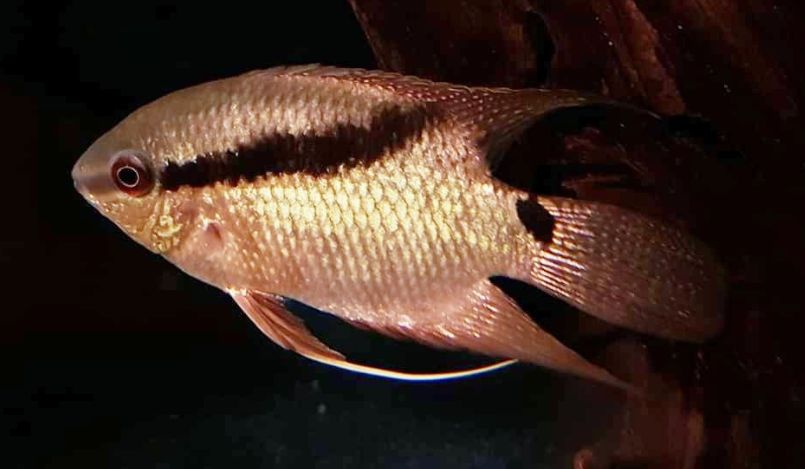
Symptoms of Excess Chlorine
This excess chlorine will often give very random deaths. Some fish will keel over and die immediately, others will be just fine. It tends to affect one species more than another. It all has to do with the thickness of the mucous covering on the gills. A thick mucous covering can prevent chlorine from killing the cells in the gills. Some species just have thicker mucous. And some fish can live on reduced oxygen from impaired gills while others succumb to any reduction in body oxygen. When fish get “chlorinated” they have some symptoms such as:
- Fish hit by chlorine can act very erratic. They can twirl, hit the sides of the aquarium, or even dive into the substrate. They are trying to get away from the burning chlorine.
- Sometimes with chlorine the fish just pant at the bottom of the tank. Often the entire tank of fish will be hanging motionless close to the bottom.
- Other times they “current surf” in the flow from the filters or the current produced by wavemakers. They are trying to increase the oxygen going into their damaged gills.
- Rarely with excess chlorine the fish in a tank will get white scaly skin.
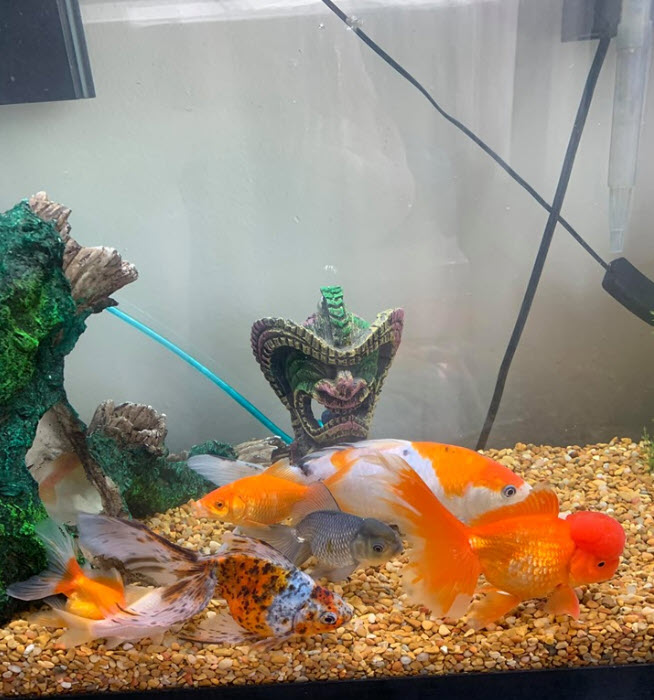
Here are three fish which were hit with excess chlorine:
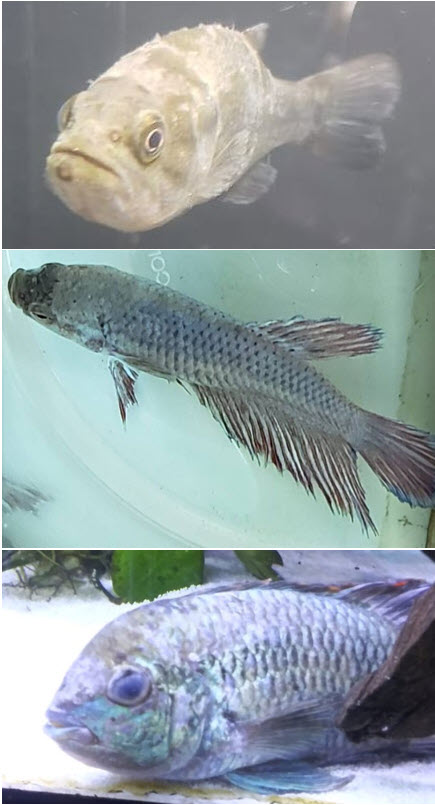
Here is a pleco which was hit with chlorine and has scaly skin as a result:
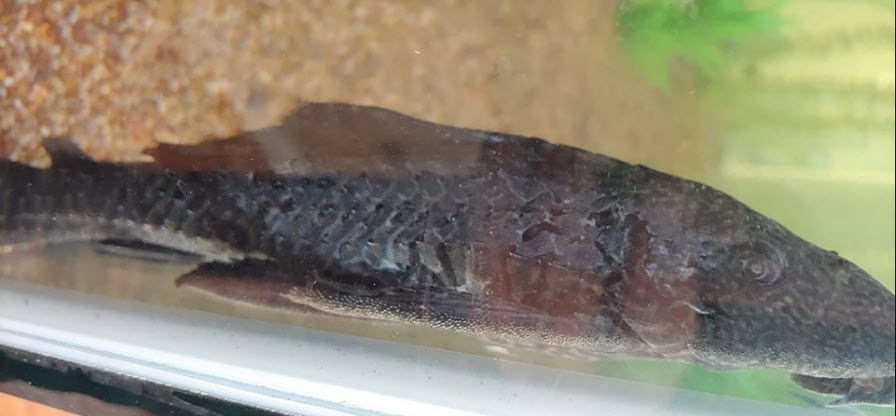
“Natural” ways to Remove Chlorine and Chloramine
Note there are many “natural” methods pushed on social media for removing chlorine and chloramine. These “non-chemical” methods include: letting the water sit for 24 hours, aerating the water, spraying the water through shower head and UV light.
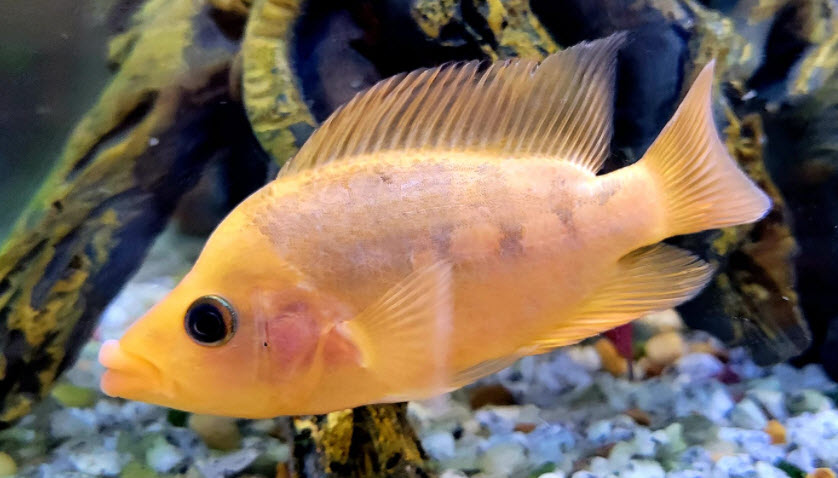
I didn’t test these methods of removing chlorine and chloramine because they will ALL be very highly variable depending on the chemistry of the water and the chlorine or chloramine. So I might find that in my water chemistry a 24 hour “outgassing” works well. A reader might then use a 24 hour outgassing with their water and end up killing a tank of fish. And I do NOT want to be responsible for killing a tank of fish.
The various sulfite reducing agents are a cheap, very safe and extremely reliable way to remove chlorine and chloramine. Any other way is not reliable and simply shouldn’t be used.
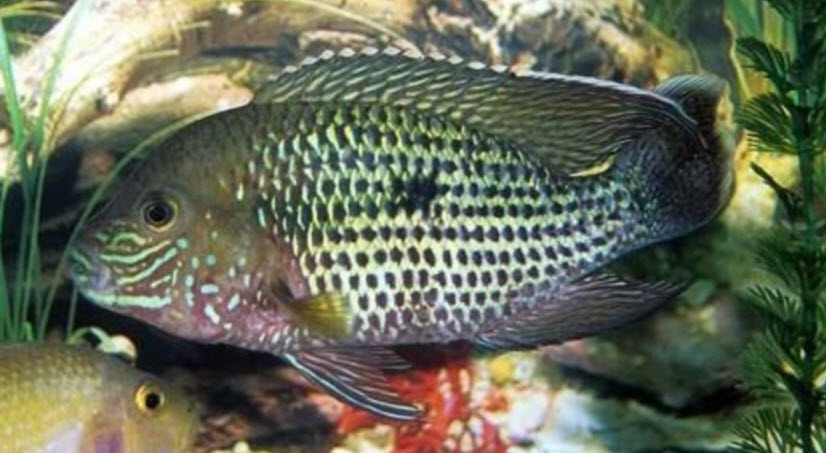
“I Don’t Use Conditioner!”
Now there are some uninformed (I prefer a different term) who have chlorinated water and don’t treat for chlorine and claim their fish are unaffected. There are four mechanisms for chlorine to be neutralized:
- There is conditioner in the water
- There is a lot of bacteria in the water
- There is fresh activated carbon in the filter
- There are a lot of plants in the aquarium
The last three mechanisms take time to remove the chlorine. So while the hobbyists may see no apparent damage, in a chlorine pulse the gills of the fish may well suffer long term damage. Any hobbyist with chlorinated water should either add a lot of sodium thiosulfate conditioner or test the water for total chlorine and add conditioner accordingly. Not adding conditioner risks long term unseen damage to the fish. Not doing this also risks a mass die off of fish, which is not a pleasant experience.
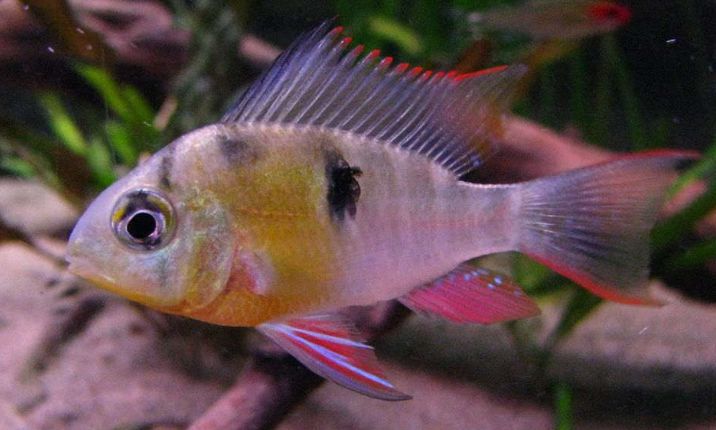
Fallacies About Excess Chlorine
This is a repeat of a section above where I go into more depth on the subject. If someone comes up on social media and says they did a water change and some or all their fish died overnight there are typically several incorrect responses:
- Your pH was too different and they died from pH shock
- Your temperature difference was too great and they died from temperature shock
- Some new rocks or new décor poisoned your fish
- The fish got an electric shock
- You used the wrong conditioner and it killed your fish.
- You obviously had an ammonia spike that rapidly killed all your fish
All these things are just common myths in the hobby. The “pH shock”, “temperature shock”, poison rocks, electric shocks, and bad conditioners are all simply false myths parroted over and over again on social media. None of them has EVER killed a fish. And ammonia kills very slowly, over many weeks, unless your water is over 9.0 pH. We go into each myth below:
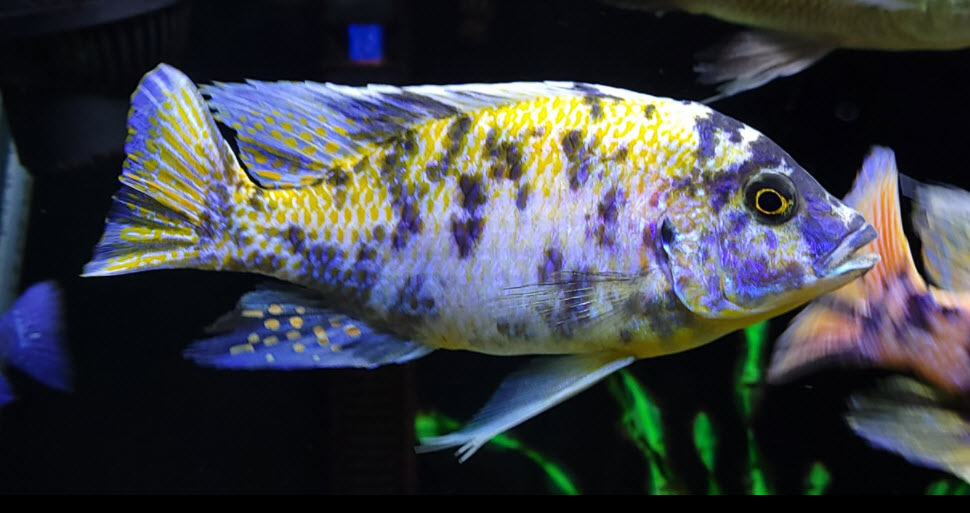
Mythbuster: pH Shock Doesn’t Exist
Fish in the wild constantly swim though water with wildly different pH’s as the sun, plants and carbon dioxide interact. So all fish can take very large rapid changes in pH. This myth is debunked in the following link:
4.8. Stability is not Important
.
Mythbuster: Temperature differences of less than 10 degrees F are Harmless
As anyone who has swum in a lake on a sunny day can attest, there are very large “thermoclines” with radically different temperatures in natural lakes. Fish constantly swim through these thermoclines with no damage. So all fish can take rapid changes in water temperature. This myth is debunked in this link:
4.8. Stability is Not Important
.
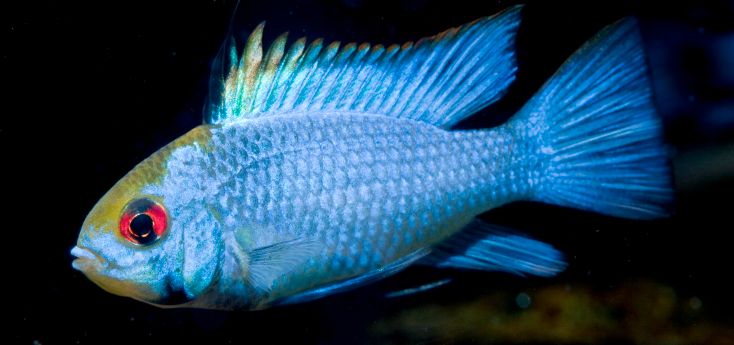
Mythbuster: There are NO Toxic Rocks
There are no “toxic” rocks. It is very common for hobbyists to do a water change when doing something like changing the décor and adding new rocks at the same time. They then come on social media and say things like: “The rocks from my local fish store poisoned all my shrimp overnight!”. This myth is debunked in the following link:
14.3. Rocks
.
Mythbuster: Fish DO NOT get Electrocuted
It is virtually impossible to electrocute a fish as few tanks have a ground in them. Here is a link which debunks that myth:
14.11. Electrocution in the Aquarium
.
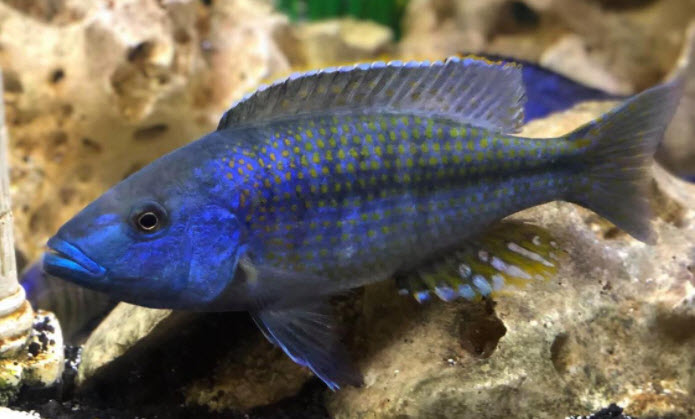
Mythbuster: Too Much Conditioner will only Rarely Kill Fish
And most chemical conditioners are based on a very simple chemistry. They have sulfite groups (SO3) which are oxidized by chlorine to sulfate groups (SO4). These sulfite reducing agents are all very mild and can’t possibly kill fish at recommended dosages. So a “new conditioner” cannot kill the fish if used at the proper dosages. There are some conditioners which can produce some formaldehyde or some sulfur dioxide in the aquarium. But even these conditioners are quite safe at the recommended levels. Here is a link which debunks that myth:
5.5.3. Water Conditioners
Note that there are a few “natural” products which claim to remove chlorine. Avoid these products, they are not water conditioners and do NOT remove chlorine. There are also some forms of “API Stress Coat Aquarium Water Conditioner” which do NOT have a red plus sign (+) on them. These API conditioners do NOT remove chlorine, even though their label says they do.
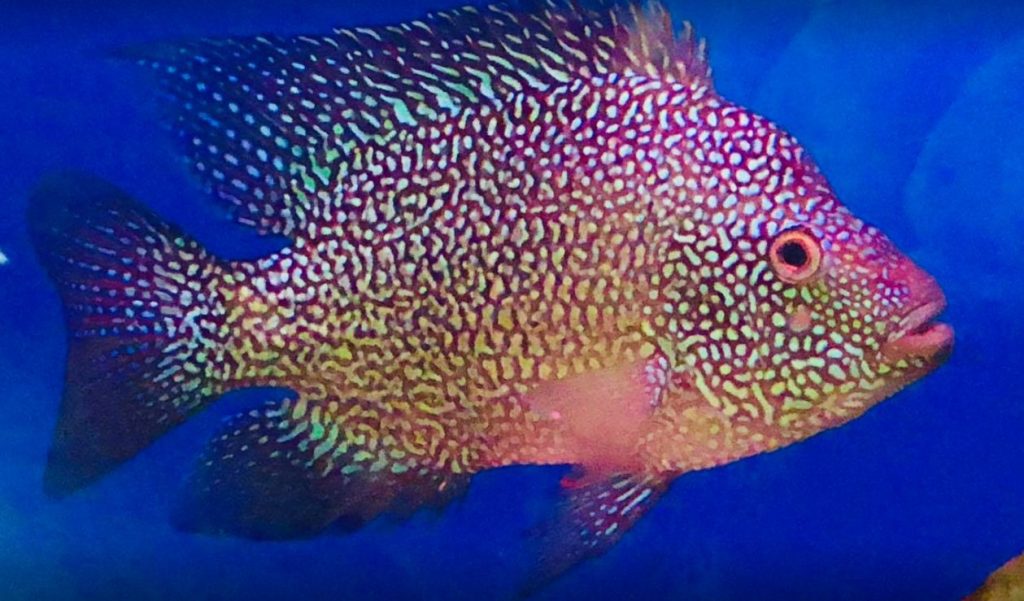
Mythbuster: Ammonia does not kill rapidly.
When there is a large loss of fish dying overnight reported in a Facebook forum there are immediately many people posting that the fish died because of ammonia poisoning, “obviously”. The posts are simply parroting what they’ve read somewhere else. They are simply wrong. Ammonia kills gradually over time. It takes weeks or months to do its evil. Chlorine kills overnight.
One Facebook post on an Aquarium forum went like this:
“When I started my 75 gallon African cichlid aquarium, I was doing some routine maintenance and I made the mistake of doing a water change and cleaning my HOB filter. Long story short, I lost about 12 fish in 2 days. Most of the beneficial bacteria was gone and I got an ammonia spike.”
This is typical. A hobbyist believes that because they cleaned their filter they got an ammonia spike and it killed their fish. This is incorrect. They did a water change with water which was super-chlorinated and killed their fish.
Ammonia damages fish by passing through the gills of the fish as the gas ammonia. The ammonia then converts to ammonium in the bloodstream of the fish. This ammonium imbalance then damages the internal organs relatively slowly. If the fish is going to die it will generally take at least several days and more likely weeks, months or even years for that to happen.
For more on how ammonia kills and at what levels it kills go to this link:
5.2. Ammonia Toxicity
Chlorine is 100 to 1000 times more toxic than ammonia. Chlorine kills exposed tissues like the gills of the fish outright. When the cells in the gills of the fish die, the fish is starved of oxygen and may die anywhere from minutes to days after exposure to the chlorine. Therefore, chlorine kills fast and ammonia either doesn’t kill or kills slowly.
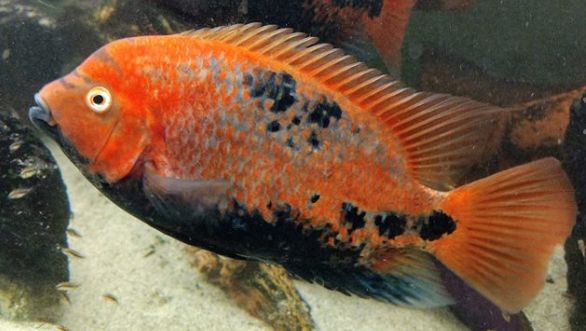
In the summer months many municipalities must super-chlorinate. They have no choice. When this happens there will be a flood of Facebook posts on how whole aquariums of fish died overnight. The replies and “advice” always are that ammonia killed the fish. The simple fact is that:
.
Ammonia does not kill overnight! Chlorine kills overnight!
.
The Truth: If one asks, the hobbyist with the tanks of dead or dying fish has almost always has done a water change with chlorinated water just prior to the fatalities. It is just very common to have chlorine spikes kill all the fish or most of the fish in a tank. VERY COMMON!
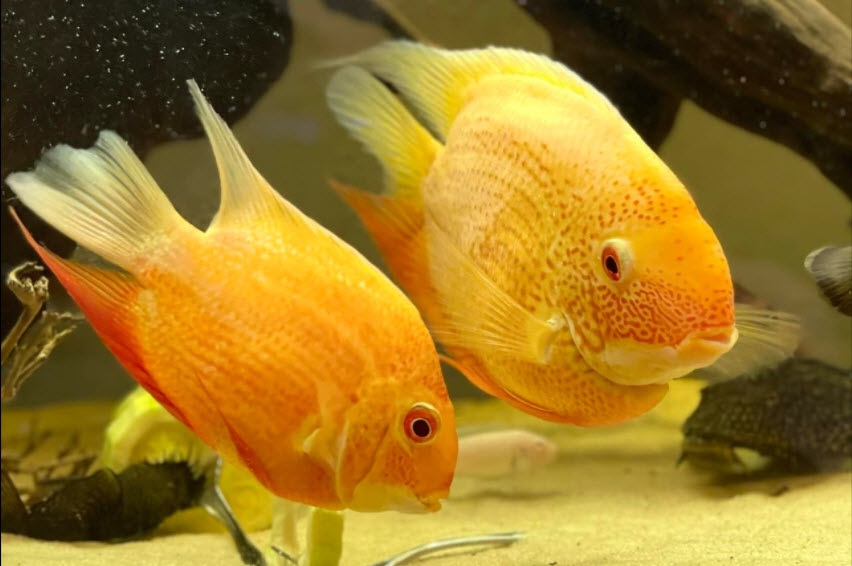
Toxicity of Chlorine
Chlorine is a bad actor in the aquarium. A journal article is pertinent (“Effects of Residual Chlorine on Aquatic Life”, William A. Brungs, 1973):
“Increased use of chlorine and recent studies of residual chlorine toxicity in aquatic systems have emphasized the need for close scrutiny of present disinfection procedures. This review discusses chlorine uses and chlorine chemistry and emphasizes toxicity studies in the field and in the laboratory. Interim criteria, based on knowledge to date, for permissible concentrations of total residual chlorine are: (a) in areas receiving wastes treated continuously with chlorine, not to exceed 0.01 mg/l for the protection of more resistant organisms only, or not to exceed 0.002 mg/l for the protection of most aquatic organisms; and (b) in areas receiving intermittently chlorinated wastes, not to exceed 0.2 mg/l for a period of 2 hr/day for more resistant species of fish, or not to exceed 0.04 mg/l for a period of 2 hr/day for trout and salmon. If free chlorine persists, more restrictive criteria are warranted.”
The pertinent data point here is the 0.04 mg/l limit for trout and salmon. This is 0.04 parts per million (ppm), or 40 parts per billion. This is a very tiny amount of chlorine, especially considering most water is chlorinated to a level 25 to 100 times heavier than that.
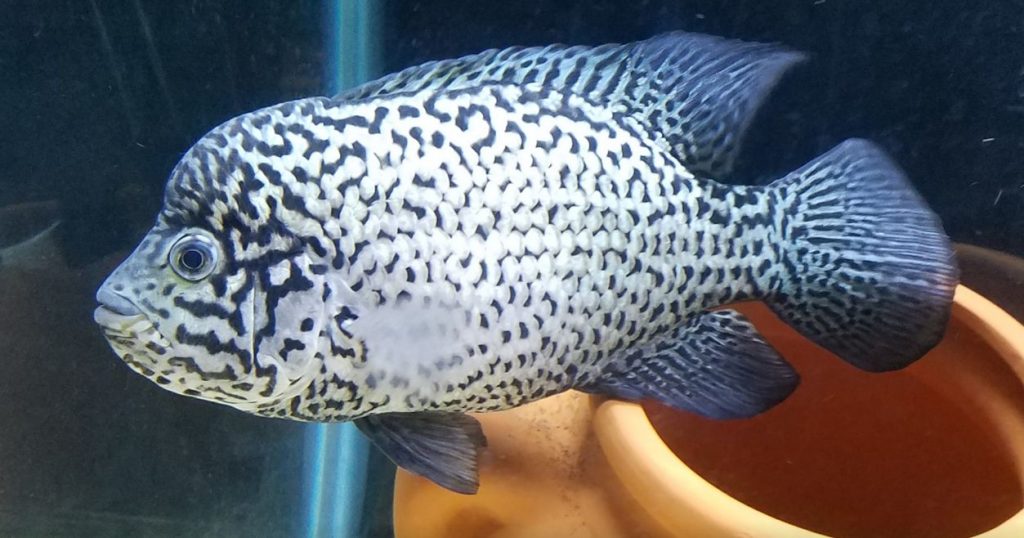
Another reference is pertinent (“Toxicity of Combined Chlorine Residuals to Freshwater Fish”, John Zillich, 1972):
“On-site continuous-flow bioassays on fathead minnows using chlorinated and dechlorinated effluents from two treatment plants have shown residual chlorine to be the principal toxic agent in these effluents. The toxic effects at both locations were similar, in spite of the fact that one plant received metal-finishing wastes and the other did not; in both cases, the pH and dissolved oxygen concentration were favorable for fish life. The residual chlorine concentrations that produced a 100 percent kill was 0.16 and 0.21 mg/l; threshold concentrations were 0.04 and 0.05 mg/l.”
Fish started dying at a concentration of 0.04 to 0.05 ppm (mg/l). This is one tenth the minimum chlorine recommended by the EPA for safe drinking water. This is why forgetting to neutralize the chlorine in a water change can kill fish in minutes.
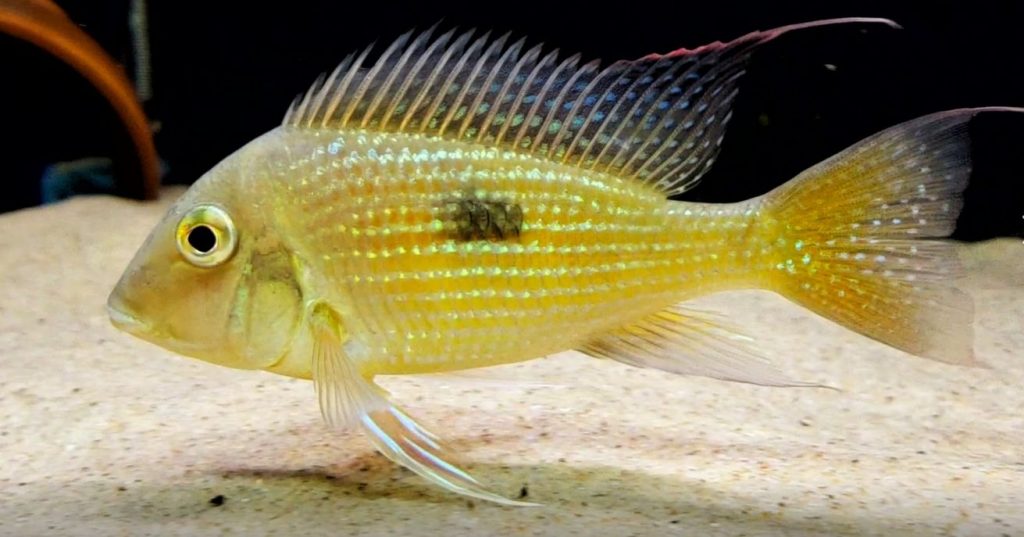
Chlorine is Capricious
This reactivity of chlorine with suspended organic matter and bacteria in the water column in an aquarium gives another peculiarity of chlorine. It affects fish very capriciously. Sometimes only one fish dies, sometimes a few fish die, and sometimes most of the aquarium dies. It depends on the concentration of the chlorine, the concentration of the suspended organics, and where the fish are in the aquarium.
This capriciousness also manifests itself over time. Sometimes if the chlorine dose is high the fish die very rapidly. But sometimes the fish just get stressed for oxygen due to damage to the gills from the chlorine. The fish get into the most oxygenated water they can, typically near the surface. Then they may slowly die over a span of a week or so. Sometimes some will make it through. It’s not a clear cut “all die at once” scenario.
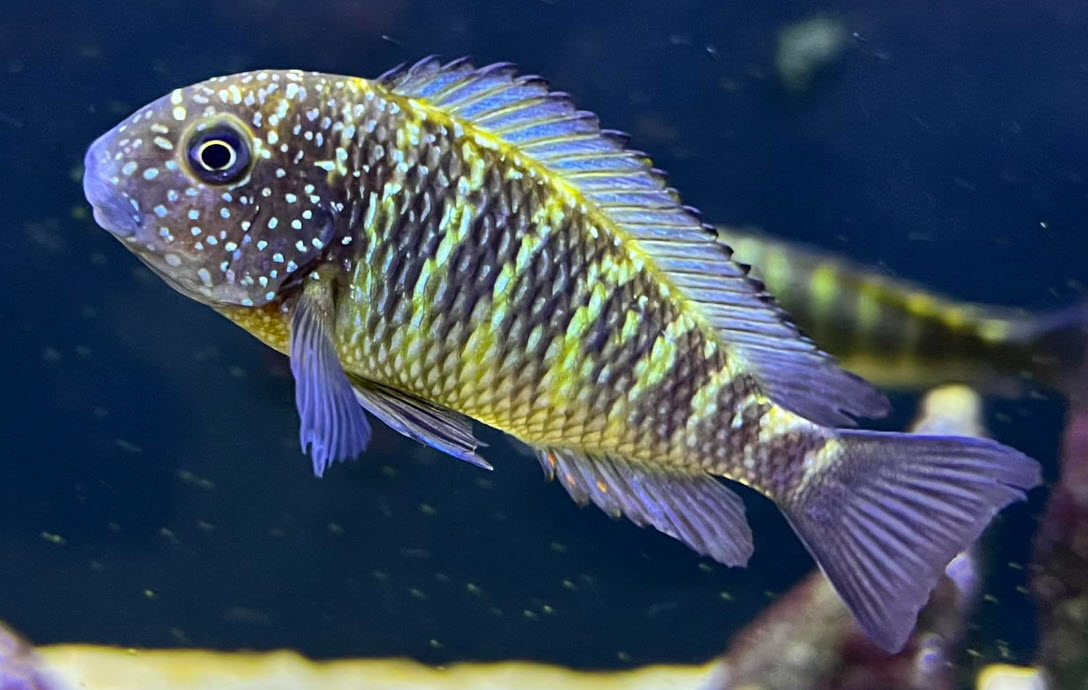
A research article is pertinent:
Some Histopathological Aspects of Chlorine Toxicity in Rainbow Trout Mahjoor and Loh, 2008
“Eight-month old rainbow trout (Oncorhynchus mykiss) were found dead in a freshwater recirculation system in the key center of fish health research center of University of Tasmania, Launceston, Australia. Ten days prior to this incident, the system was shut down during a blackout. Fish were found swimming in a swirling motion or died suddenly. Ten days later mortality rates reached 60%. The fish were immediately fixed in 10% formalin buffer and were sent to DPIWE diagnostic laboratories in Launceston. Investigations revealed that the aquariums had been refilled with town water that had variable levels of chlorine and even after sodium thiosulfate was added, chlorine levels were still as high as 0.2 ppm. The type of Chlorine used by the water department was Chloride dioxide and CL 2 (Liquid).
Dead fish had enlarged gall bladders. Mild multifocal dermatitis was observed in the skin. Their carcasses appeared pale and anemic. Wet preparations of skin scrapes and gill biopsies were negative for parasites.
Histopathological examination revealed gill edematosis and foamy vacuolation especially in the proximal part of the secondary lamellae. Gill epithelial cells were swollen. This feature was more prominent in chloride cells. Epithelial lifting and telangiectasis in the secondary lamellae were also found.”
As usual some interpretation is necessary. At very low concentration of chlorine some fish died suddenly and some exhibited twirling before they died. Others died over a span of ten days due to damage to the gills and internal organs which resulted in swelling of the gills and organs. Symptoms included peeling and patchy reddening of the skin.
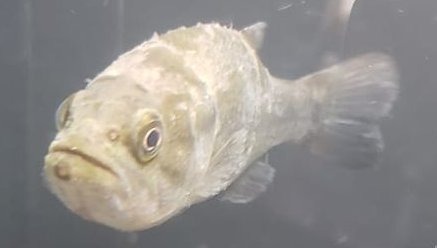
This is quite normal in the aquarium also. Some fish die rapidly, others take a few days, and some sometimes survive. This can be capricious and sometimes only one species of fish will die while the others live. Sometimes when several tanks have a water change at the same time one tank will be completely killed while another will be just fine. That’s just the dynamics of chlorine in a system filled with various organic materials.
For more information on chlorine and chloramine click on the following:
5.5.2. Chloramine in the Aquarium
5.5.3. Conditioners
5.5.4. Stress Coat Products
.
Return to Water Parameters Menu
.
Aquarium Science Website
The chapters shown below or on the right side in maroon lead to close to 400 articles on all aspects of keeping a freshwater aquarium. These articles have NO links to profit making sites and are thus unbiased in their recommendations, unlike all the for-profit sites you will find with Google. Bookmark and browse!
.

Dany says
What an eye-opener this article, and this whole website, was for me!
This is exactly what has been happening to my fish when I do water changes.
All the symptoms are there, just as you described. For months I couldn’t wrap my head around the erratic swimming, gasping, and inexplicable deaths of my Guppies only after water changes. So much so that I almost stopped doing water changes altogether (easy thing to do cause my tank is lightly stocked, super heavily planted, and over filtered). My ammonia, nitrites, and nitrates readings are constantly 0 ppm, and the only reason I was doing water changes was to syphon the fish poop that accumulates on top of the sand.
On social media all the advice I got was to buy the “you know what…” products. Others immediately started pointing fingers, like my tank was not cycled, or I did this or that wrong…
No useful help at all.
Now I finally know and can take the necessary precautions, thanks to you and your study.
THANK YOU.
Dave says
In reply to Rodwin …. You are lucky. Start using conditioner every water change.
Rodwin says
I never use conditioner in my water even though i live in city. It hasnt affected any fish yet. I have been having the tank for couple of month now and i have some tetras and guppies. It’s a bare bottom tank. Is there a explanation for that? Should i start using conditioners??
Dave says
In reply to Ben …. If cleaning chemicals, bleach or clove oil is USED in a room with fish it can kill them.
Ben says
Just out of curiosity. Say a fish tank is located close to some area where bleach is often used or stored, eg the laundry room/bathroom. Would any “gas-off” somehow diffuse into the aquarium? How about other cleaning chemicals? Or clove oil in a nebuliser?